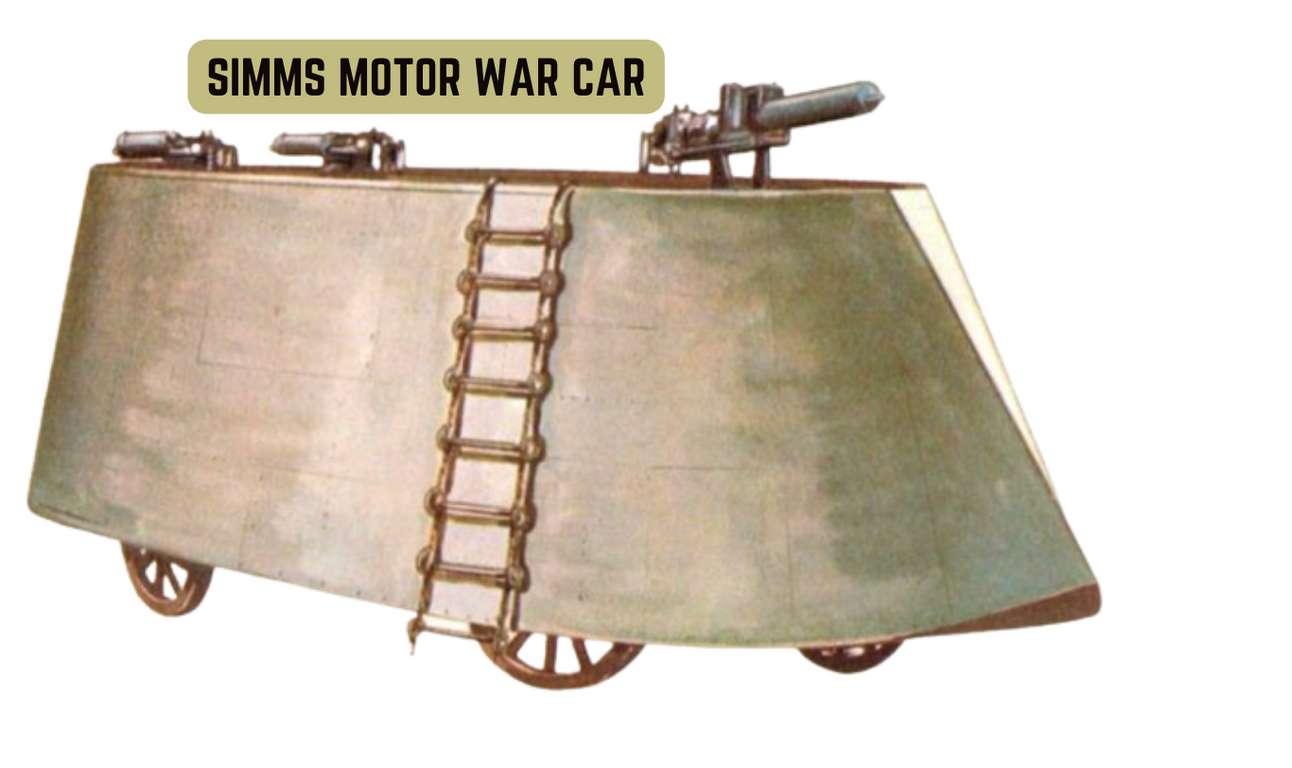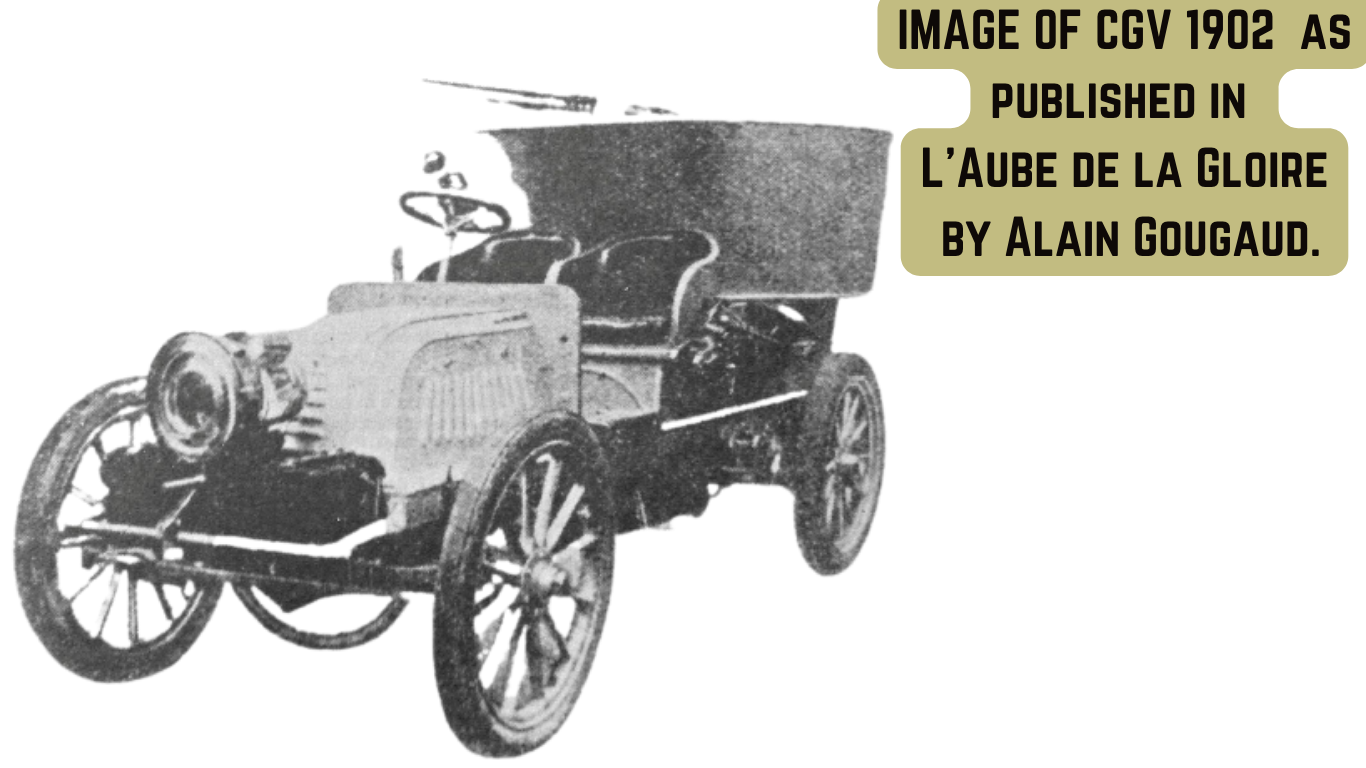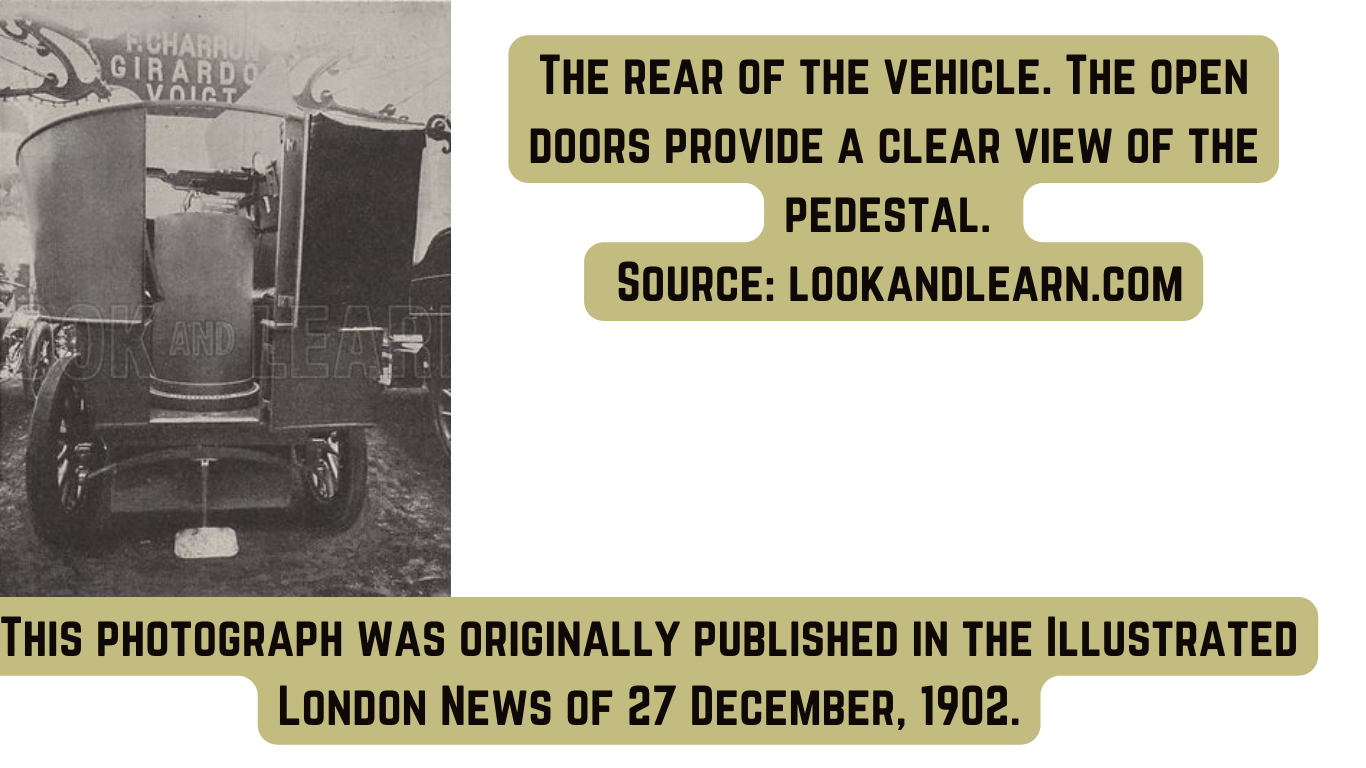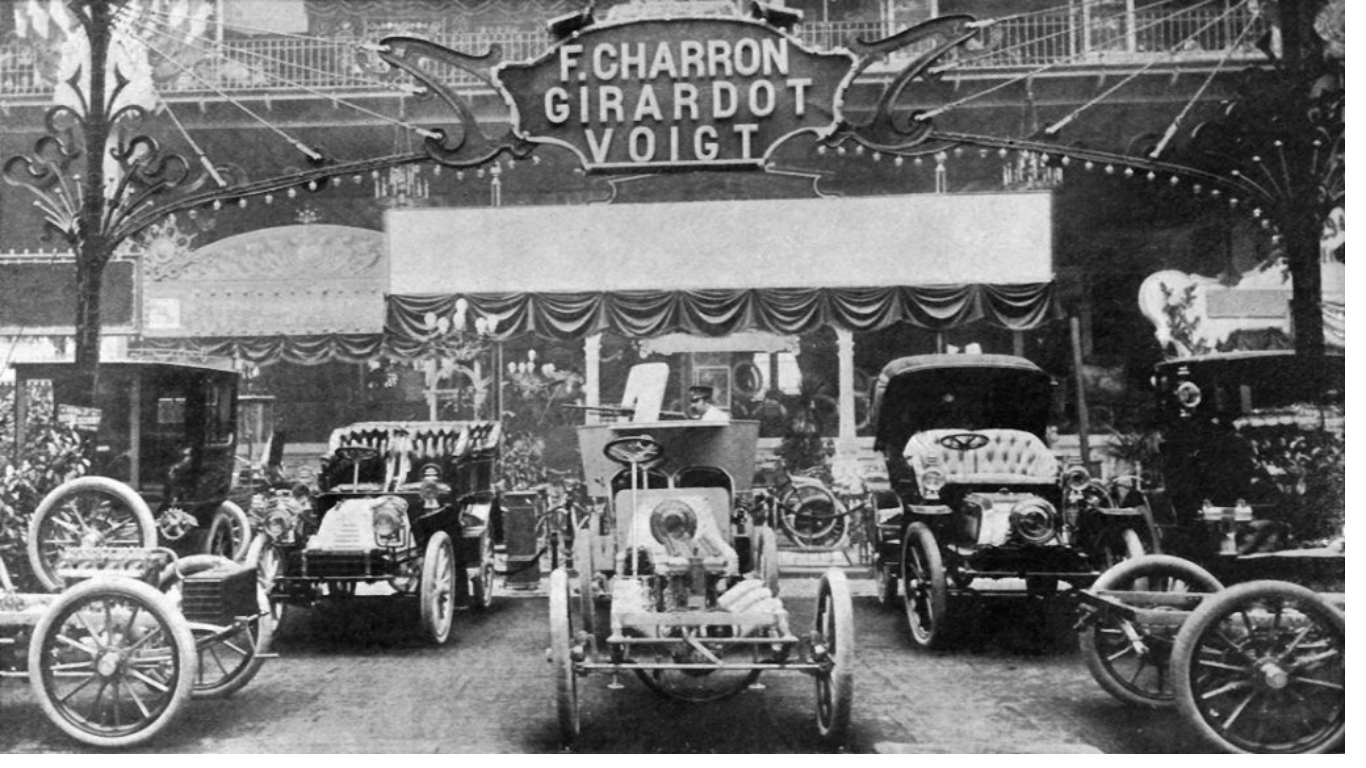Ad
Ad
The French Charron, Girardot et Voigt, 1902- The Earliest Armoured Car of France
Through our article series on Evolution of Military Vehicles, we bring to you unique and interesting stories from Military Automotive History. And today, we will be discussing the earliest French armoured car - The French Charron, Girardot et Voigt, 1902.

Self-propelled armoured cars had created quite a stir and were being considered for Military use in the late nineteenth century. We have already discussed the first War Car designed by Frederick Richard Simms which was unveiled in the Crystal Palace in London, in April 1902. It was during the same time that a lot of work was being accomplished in France for the development of an armoured vehicle.
‘Tank’ came into picture from World War I but before that the military vehicle that was popular was more like a chariot and is commonly known as an armoured car today. Armoured cars were made for military use and generally had armour plates and heavy machine guns mounted on the chassis which made the vehicle much heavier than expected.
The Charron, Girardot et Voigt 1902- The First French Armoured Car
Ad
Ad

The Charron, Girardot et Voigt 1902 was a French armoured car developed in 1902 by the manufacturing company Charron, Girardot et Voigt.
The credit for designing the first fully armoured car goes to the Georgian engineer Mikheil Nakashidze who designed it for use by the Russian Army. The vehicle designed by him was armed with a machine gun and had an armour plating of 4-8mm thickness. The combat weight of the vehicle was 3000 kg and it had a road speed of 50km/hr.
The design was approved by the Russian War Ministry to be used for service by the Russian Army. But the production plants in Russia did not have the required facilities for producing the designed vehicle. As a result, the contract of manufacturing the vehicle was given to the French company Charron, Girardot et Voigt.
Charron, Girardot et Voigt (C.G.V.)
Charron, Girardot et Voigt (C.G.V.) was a French Automotive Manufacturer which was founded by the racing cyclists and motorists Fernand Charron, Léonce Girardot and Émile Voigt in 1901. In the following year 1902, the CGV produced a variety of chassis and engines. They were displayed at the 1902 Salon de l’Automobile et du Cycle, the Car and Bike Show in Paris.
The two main attractions during the motor show were the 40 hp engine and the armoured car, The 1902 Charron-Girardot-Voigt.
The French armoured vehicle used an internal combustion engine and there was a machine gun mounted to the rear of the chassis. The machine-gun that the vehicle was equipped with, was a Hotchkiss machine gun, and it had a 7 mm armour for the gunner. The rear portion of the vehicle was armoured, leaving the driver and passenger next to him unprotected.
The armoured car did not receive much attention from the press but in the few magazines that it featured, the reports were positive. The show in which the vehicle was presented was meant to highlight civil cars and engines. Sadly the audience did not focus on the new military automotive achievements.
Hotchkiss Machine Gun

Hotchkiss machine gun is a rapid fire weapon which was developed in the year 1878 by Benjamin B. Hotchkiss. The Hotchkiss machine gun was sold by the firm Hotchkiss et Cie. which was established by the gunsmith Benjamin Hotchkiss. He was an ordnance engineer from the United States who moved to France and set up a factory. He was manufacturing arms used by the French in the Franco-Prussian War. The French army used the Hotchkiss for the first time in the year 1896.
Design of the French Armoured Car

The design of the French armoured car was quite simple and it was a regular four-seater passenger car of which the two rear seats were replaced by a circular armour, which looked more like a bathtub.
In the middle of the armoured portion there was a pedestal on which the machine gun was mounted.
A tripod for the machine gun was carried on the left side of the vehicle and this made it clear that the machine gun could be dismounted and carried on the tripod.
Crew
There were three seats in the vehicle. The driver and the passenger occupied the front seats which were in the open-air cockpit. They did not have any armour protection.
A third passenger was supposed to operate a Hotchkiss 7.7mm machine gun which was mounted on a raised platform at the rear of the vehicle.
Protection
We can see that a gun shield provided protection for the gunner but the driver and the passenger sat unprotected in front of the armoured tub. There was very little protection for them if there was a fire from the sides and front.
There was a hinged armoured plate that could be folded upwards above the front seats, but that would be sufficient to provide protection from their very own machine gun, rather than the enemy.
Engine
The vehicle was powered by a 50 horsepower engine which was located in the front compartment.
Similarity with Simms War Car
It is believed that the CGV was inspired by Simms Motor War Car because during the time the French Armoured Car was made, Simms' War Car had gained enough popularity. Simms’ War Car was covered massively by the press and had its photographs all over the magazines, journals and newspapers.
Though we do not have much proof of this assumption, the fact of the matter is, the two vehicles have a lot of similarity. Both the vehicles have a similar kind or armour and both have a machine gun which is mounted on a pedestal.
Military Evaluation of The French Armoured Car

After being displayed for the public at the 1902 Car and Bike Show in Paris, the armoured car was moved to the French Army for military trials. The first trials took place at Camp de Chalons on June 30 and July 1, 1903.
The vehicle was observed by a commission that consisted of several officers from the army. During the trial the vehicle was judged by all standards.
The officers from the French army made the following observations:
The Vehicle was Powerful
They concluded that the vehicle was quite powerful and could be driven on rough ground, provided the driver was skilled.
The Vehicle was Heavy
One major setback was the weight of the vehicle. It weighed 3 tonnes and was incredibly heavy.
High price
The price of the vehicle during that time was 45,000 Francs which was very high.
Power Weight Ratio
In the French Armoured Car, the power and weight ratio was not in proportion as the vehicle was very heavy. The heavy weight of the vehicle compared to the power, would expose it to many risks.
The Power to weight ratio is a measurement of the overall performance of the engine. In order to calculate PWR, the Power released by the vehicle is divided by the vehicle’s weight (p/Kg).
CarBike360 Says of the French Army
The French army concluded that the number of ways that the French armoured vehicle could be used by it was very limited. The Commission found an armoured car to be more suitable for the general staff as it would allow officers to move quickly and stay protected. They believed that an unarmoured car with a machine gun would be good enough to fulfil similar requirements during war.
Although the prototypes of the armoured car had performed quite well during the evaluations by the French army, the vehicles were never used in series production and became a part of history.
The French armoured car, The CGV built in 1902, marked the beginning of the history of armoured vehicles in France. With CGV 1902, winds of change started blowing in France and the French army started formulating its plans to develop armoured cars. The CGV 1902 helped them develop their next vehicles and paved the way for the first fully armoured vehicle, which was a new milestone in the military developments of France and will be covered in the upcoming articles.
World War I saw a sudden increase in the demand and manufacture of armoured vehicles in France.
Our article series on ‘Evolution of Military Vehicles’ is our endeavour to bring out the most celebrated military vehicles from the past. We will keep sharing such unique and interesting stories from Military Automotive History for our passionate readers. For more stories and latest updates, keep checking our website www.carbike360.com. In case of any query, feel free to contact us.
More News
Mahindra's XEV 9e and BE 6e Final Designs Revealed
Discover Mahindra's XEV 9e and BE 6e final production designs, maintaining their bold concept looks with futuristic features and competitive battery packs, ahead of the November 26 global reveal.
18-Nov-2024 06:19 AM
Read Full NewsMahindra's XEV 9e and BE 6e Final Designs Revealed
Discover Mahindra's XEV 9e and BE 6e final production designs, maintaining their bold concept looks with futuristic features and competitive battery packs, ahead of the November 26 global reveal.
18-Nov-2024 06:19 AM
Read Full NewsAll-New Volvo ES90: A Premium Electric Sedan Launching March 2025
The all-new Volvo ES90 electric sedan, set for a global debut in March 2025. A premium EV rival to the BMW i5 and Mercedes EQE with advanced technology and up to 600km range.
18-Nov-2024 05:04 AM
Read Full NewsAll-New Volvo ES90: A Premium Electric Sedan Launching March 2025
The all-new Volvo ES90 electric sedan, set for a global debut in March 2025. A premium EV rival to the BMW i5 and Mercedes EQE with advanced technology and up to 600km range.
18-Nov-2024 05:04 AM
Read Full NewsNew-Gen Audi A5L Long-Wheelbase Sedan Revealed for China – Will It Come to India?
Audi has unveiled the new-gen A5L long-wheelbase sedan for China, debuting at Auto Guangzhou. Discover its features, specs, and the potential for an Indian release.
16-Nov-2024 09:37 AM
Read Full NewsNew-Gen Audi A5L Long-Wheelbase Sedan Revealed for China – Will It Come to India?
Audi has unveiled the new-gen A5L long-wheelbase sedan for China, debuting at Auto Guangzhou. Discover its features, specs, and the potential for an Indian release.
16-Nov-2024 09:37 AM
Read Full News2025 Kawasaki Z H2 and Z H2 SE Launched in India: Prices, Specs, and Features
Explore the new 2025 Kawasaki Z H2 and Z H2 SE: premium motorcycles priced from ₹24.18 lakh with advanced suspension and top-tier specifications.
16-Nov-2024 07:05 AM
Read Full News2025 Kawasaki Z H2 and Z H2 SE Launched in India: Prices, Specs, and Features
Explore the new 2025 Kawasaki Z H2 and Z H2 SE: premium motorcycles priced from ₹24.18 lakh with advanced suspension and top-tier specifications.
16-Nov-2024 07:05 AM
Read Full NewsHonda Electric Scooter for India to Share Motor with CUV e
Honda's electric scooter for India, launching November 27, shares its motor with the CUV e: model. Learn about its key features and expected specs.
15-Nov-2024 01:11 PM
Read Full NewsHonda Electric Scooter for India to Share Motor with CUV e
Honda's electric scooter for India, launching November 27, shares its motor with the CUV e: model. Learn about its key features and expected specs.
15-Nov-2024 01:11 PM
Read Full NewsKTM 890 Duke R Launched in India – Price, Specs, and Features
Explore the newly launched KTM 890 Duke R in India priced at Rs 14.50 lakh. Discover its 121 bhp engine, advanced features, and rivals in the street naked segment.
15-Nov-2024 11:07 AM
Read Full NewsKTM 890 Duke R Launched in India – Price, Specs, and Features
Explore the newly launched KTM 890 Duke R in India priced at Rs 14.50 lakh. Discover its 121 bhp engine, advanced features, and rivals in the street naked segment.
15-Nov-2024 11:07 AM
Read Full NewsAd
Ad
Cars In India
Maruti Dzire
₹ 6.79 - 10.14 Lakh
Skoda Kylaq
₹ 7.89 Lakh
Mercedes-Benz AMG G-Class
₹ 3.60 Cr
Mercedes-Benz E-Class
₹ 78.50 - 92.50 Lakh
MG Gloster facelift
₹ 40.00 - 45.00 Lakh
Hyundai Tucson facelift
₹ 29.00 - 36.00 Lakh
Mahindra BE 6e
₹ 17.00 - 21.00 Lakh
Mahindra XEV 9e
₹ 50.00 - 52.00 Lakh
Audi New Q7
₹ 89.00 - 98.00 Lakh
Ad
Ad
Ad